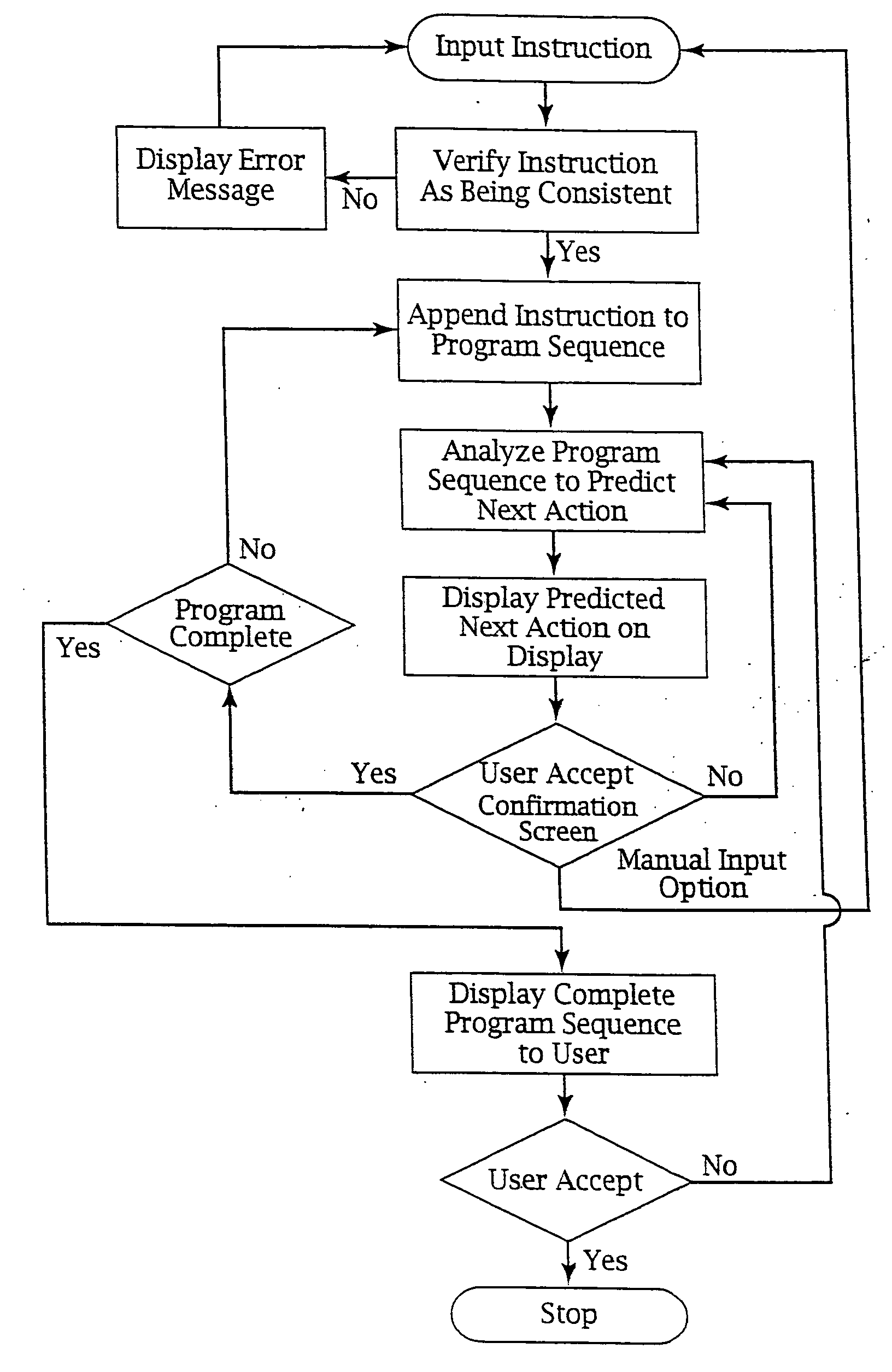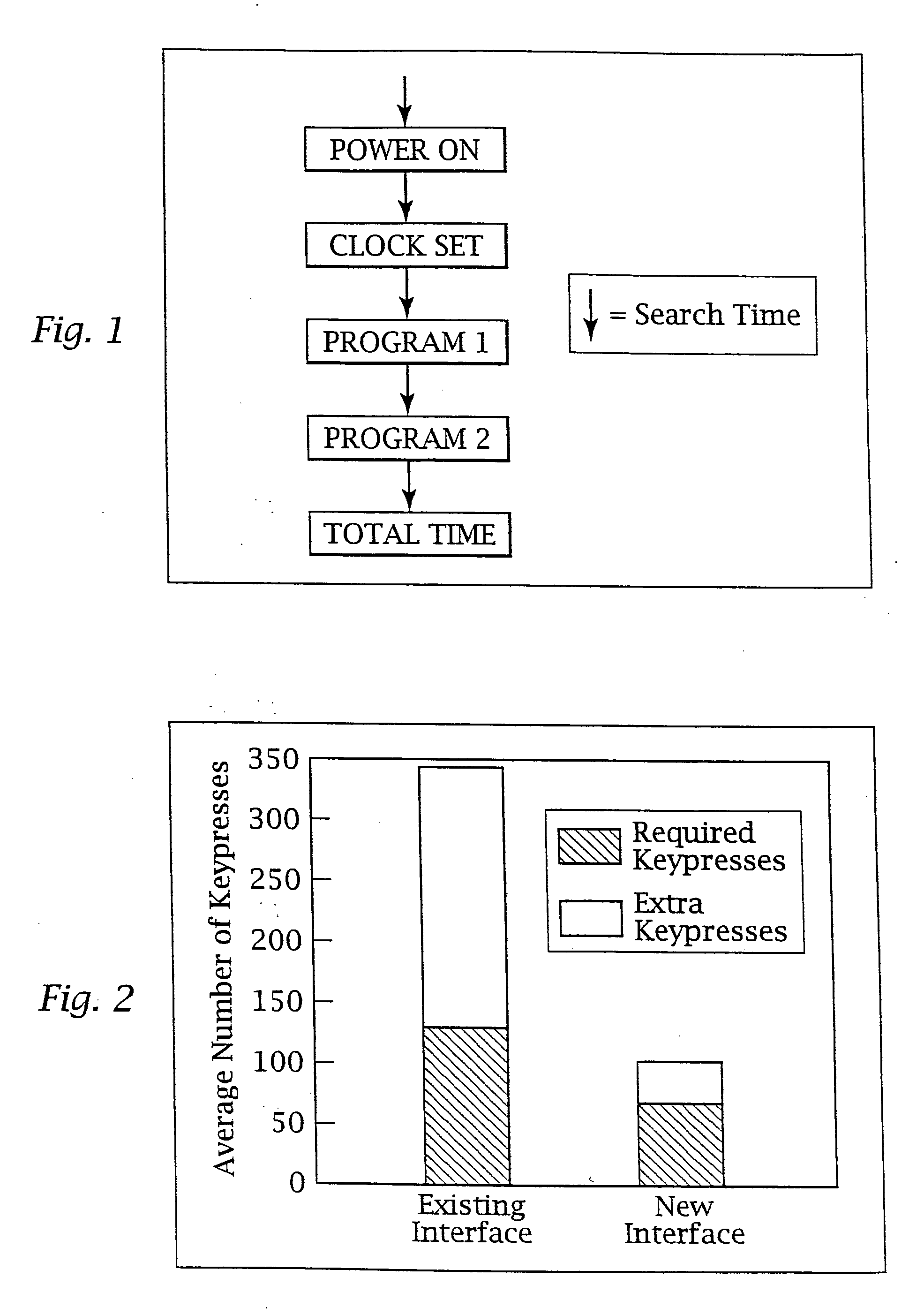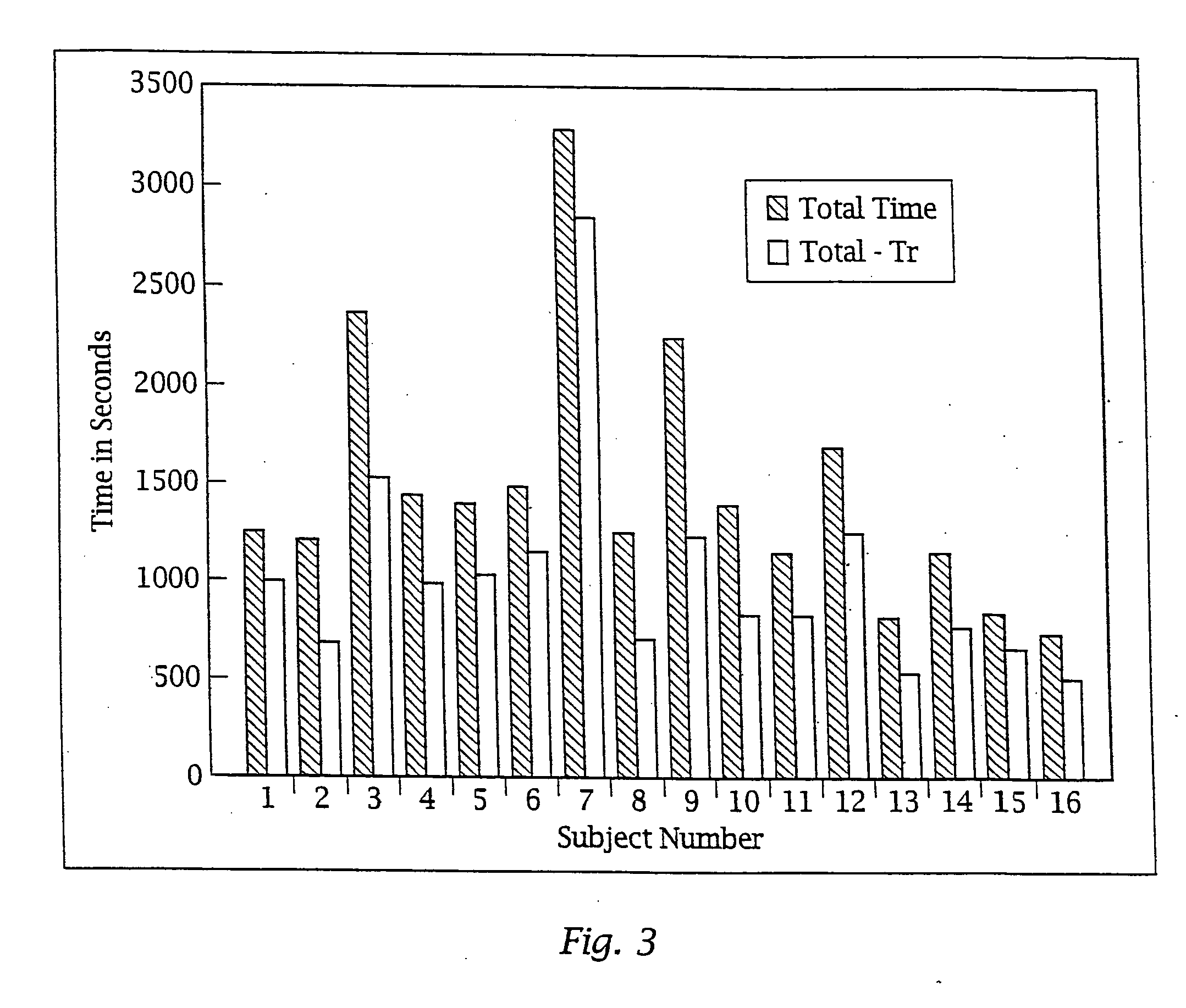Network media appliance system and method
a network media and appliance technology, applied in the field of adaptive systems, can solve the problems of general learning algorithms, system limitations by particular paradigms, and theory is typically not generalizable to other applications
- Summary
- Abstract
- Description
- Claims
- Application Information
AI Technical Summary
Benefits of technology
Problems solved by technology
Method used
Image
Examples
example 1
[0982] VCR Interface
[0983] A preferred embodiment of the interface of the present invention, described in the present example, provides automatic sequencing of steps, leading the user through the correct sequence of actions to set a program on the screen, so that no necessary steps are omitted, and no optional steps are accidentally or unintentionally omitted. These steps are shown diagrammatically in FIG. 15 of the present invention. In addition, such a system does not burden the user with the necessity of inputting superfluous information, nor overwhelm the user with the display of unnecessary data. See, Hoffberg, Linda I., “AN IMPROVED HUMAN FACTORED INTERFACE FOR PROGRAMMABLE DEVICES: A CASE STUDY OF THE VCR”, Master's Thesis, Tufts University; Hoffberg, Linda I., “Designing User Interface Guidelines For Time-Shift Programming of a Video Cassette Recorder (VCR)”, Proc. of the Human Factors Soc. 35th Ann. Mtg. pp. 501-504 (1991); and Hoffberg, Linda I., “Designing a Programmable...
example 3
[1049] Serial Data Medium Index
[1050] Another aspect of the present invention relates to the cataloging and indexing of the contents of a storage medium. While random access media normally incorporate a directory of entries on a disk, and devices such as optical juke boxes normally are used in conjunction with software that indexes the contents of the available disks, serial access mass storage devices, such as magnetic tape, do not usually employ an index; therefore, the entire tape must be searched in order to locate a specific selection.
[1051] In the present invention, an area of the tape, preferable at the beginning of the tape or at multiple locations therein, is encoded to hold information relating to the contents of the tape. This encoding is shown in FIG. 19, which shows a data format for the information. This format has an identifying header 1901, a unique tape identifier 1902, an entry identifier 1903, a start time 1904, an end time 1905 and / or a duration 1906, a date co...
example 4
[1061] Controlled Encryption and Accounting System
[1062] The present invention also allows for scrambling, encryption and locking of source material, and the receiving device selectively implements an inverse process or a partial inverse process for descrambling, decryption or unlocking of the material, much as the Videocipher series systems from General Instruments, and the fractal enciphering methods of Entertainment Made Convenient2 Inc. (EMC2, and related companies, e.g., EMC3, and Iterated Systems, Inc. The present invention, however, is not limited to broadcasts, and instead could implement a system for both broadcasts and prerecorded materials. In the case of copying from one tape to another, such a system could not only provide the herein mentioned library functions of the present invention according to Example 2, it could also be used to aid in copy protection, serial copy management, and a pay-per-view royalty collection system.
[1063] Such a system could be implemented b...
PUM
 Login to View More
Login to View More Abstract
Description
Claims
Application Information
 Login to View More
Login to View More - R&D
- Intellectual Property
- Life Sciences
- Materials
- Tech Scout
- Unparalleled Data Quality
- Higher Quality Content
- 60% Fewer Hallucinations
Browse by: Latest US Patents, China's latest patents, Technical Efficacy Thesaurus, Application Domain, Technology Topic, Popular Technical Reports.
© 2025 PatSnap. All rights reserved.Legal|Privacy policy|Modern Slavery Act Transparency Statement|Sitemap|About US| Contact US: help@patsnap.com



